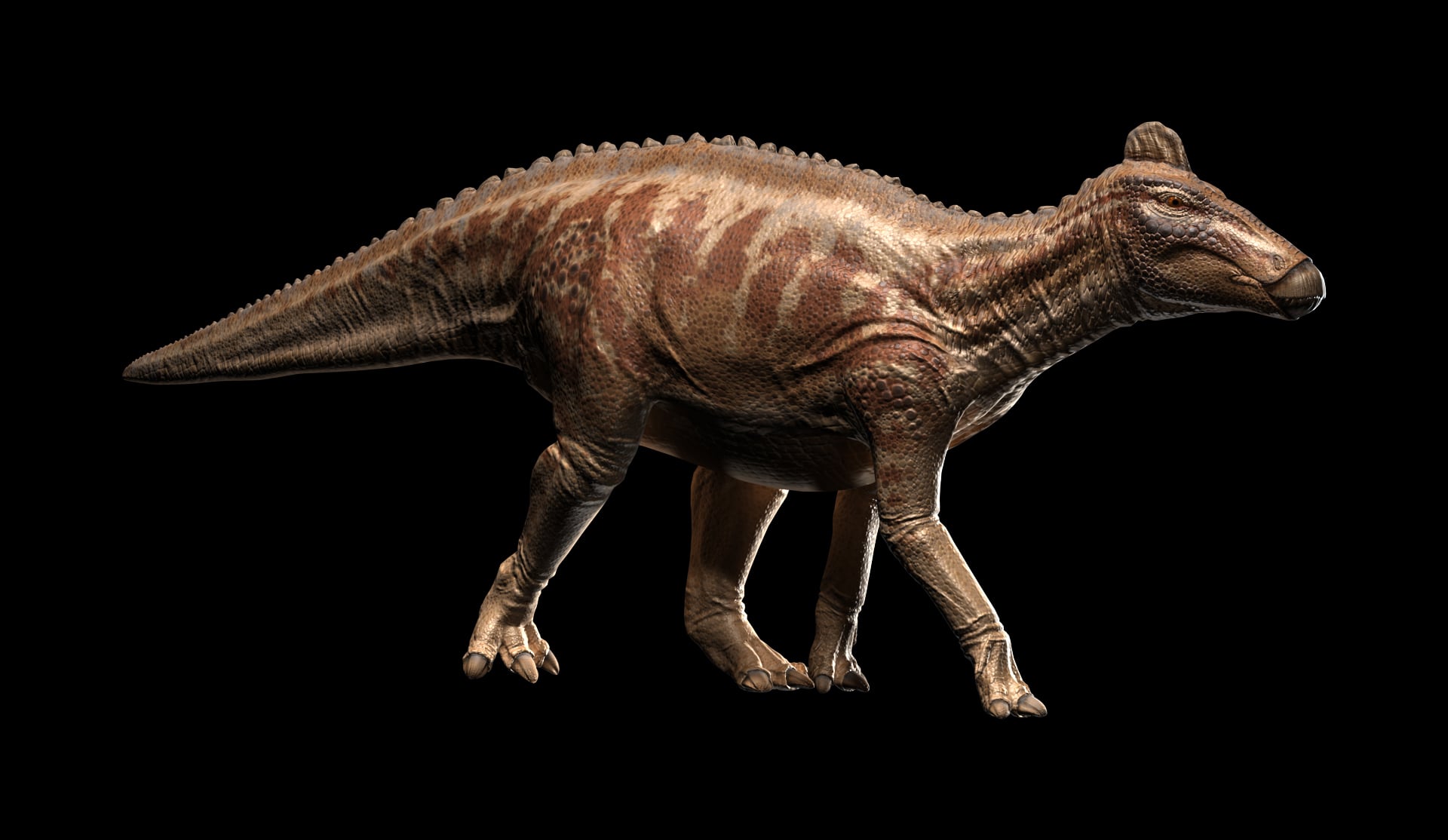
Edmontosaurus was a large-bodied hadrosaur. It was about 13 m long and weighed 4 tons. Edmontosaurus was thus one of the largest hadrosaurs ever. The genus got its name because of the place of its first discovery, the Edmonton Formation
2 species of Edmontosaurus are currently recognized among experts.
In 1912, the brothers Jorge and Levi Sternberg excavated two skeletons with skulls in Alberta (USA). The Canadian paleontologist Lawrence Lambe then described the genus Edmontosaurus in 1917 on the basis of these skeletons.
| Profile | Edmontosaurus |
|---|---|
| Epoche | late Upper Cretaceous (late Campanium and Maastrichtian) |
| Ordnung | Saurischia |
| Unterordnung | Theropoda |
| Familie | Iguanodontia |
| Gruppe | Hadrosauridae |
| Gattung | Edmontosaurus |
| Art | Edmontosaurus regalis, E. annectens |
| Höhe | 3 Meter |
| Länge | 13 Meter |
| Gewicht | 4 tons |
| Fundorte | North America , Alaska, Montana, N. Dakota, S. Dakota, Wyoming |
On the basis of very well preserved fossils the appearance of Edmontosaurus can be reconstructed very well.
It probably had a segmented dorsal crest, unlike other hadrosaurs.
On his skull he wore a fleshy comb.
On his skull he wore a fleshy crest, similar to that of a rooster.
His front legs were shorter than the stronger hind legs.
Based on the impressions of the inside of his skull, researchers assume that Edmontosaurus had very good senses of sight, hearing and smell.
Its skull has an elongated snout.
At the front end, the mouth is widened like a duck's beak.
Like most hadrosaurs, Edmontosaurus was a herd animal. Based on research in recent years, it is believed that these herds contained a huge number of specimens.
Presumably, these herds made great migrations to reach food.
Edmontosaurus was among the most common dinosaur genera of the Late Upper Cretaceous in the North American area.
The hind legs of Edmontosaurus were longer and more strongly developed than the front legs. Researchers assume that this dinosaur was able to move both quadrupedally and bipedally.
It is estimated that its maximum speed is 50 kilometers per hour.
Edmontosaurus had up to 300 chewed teeth, but the front half of its jaw was toothless. Experts believe that Edmontosaurus was one of the few dinosaurs that could chew. It was able to grind vegetable material into cellulose before swallowing it.
Its diet probably consisted mainly of conifers and coniferous trees, which could be found in fossils.
Its greatest enemy was probably Tyrannosaurus Rex, whose fossils have also been found in Edmontosaurus' large habitat.
Furthermore, it was probably another Predator, Albertosaurus sarcophagus, that preyed on Edmontosaurus.
Image sources : Die Infografen UG (haftungsbeschränkt), CC BY-SA 4.0 https://creativecommons.org/licenses/by-sa/4.0, via Wikimedia Commons
Ballista at en.wikipedia, CC BY-SA 3.0 http://creativecommons.org/licenses/by-sa/3.0/, via Wikimedia Commons
Size comparison: Hai Xing, Jordan C. Mallon, Margaret L. Currie, CC BY 2.5 https://creativecommons.org/licenses/by/2.5, via Wikimedia Commons
Juvenile and adult Edmontosaurus: Evolutionnumber9, CC BY-SA 4.0 https://creativecommons.org/licenses/by-sa/4.0, via Wikimedia Commons